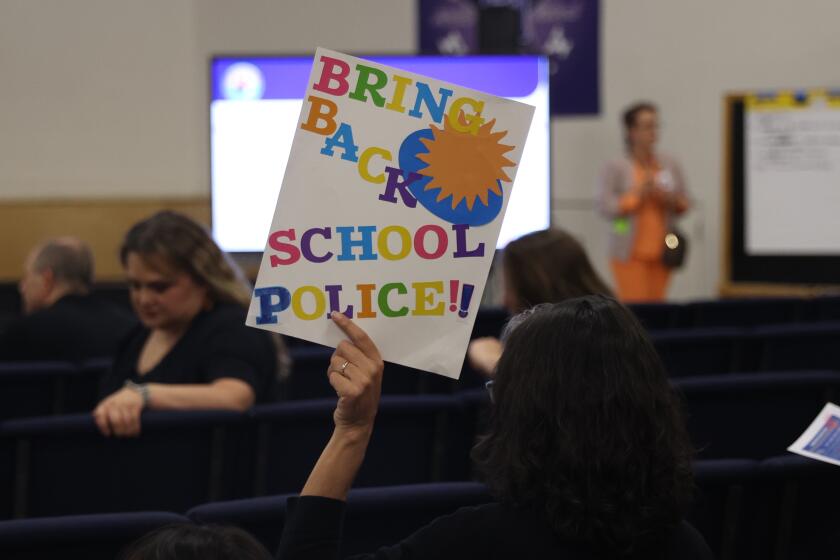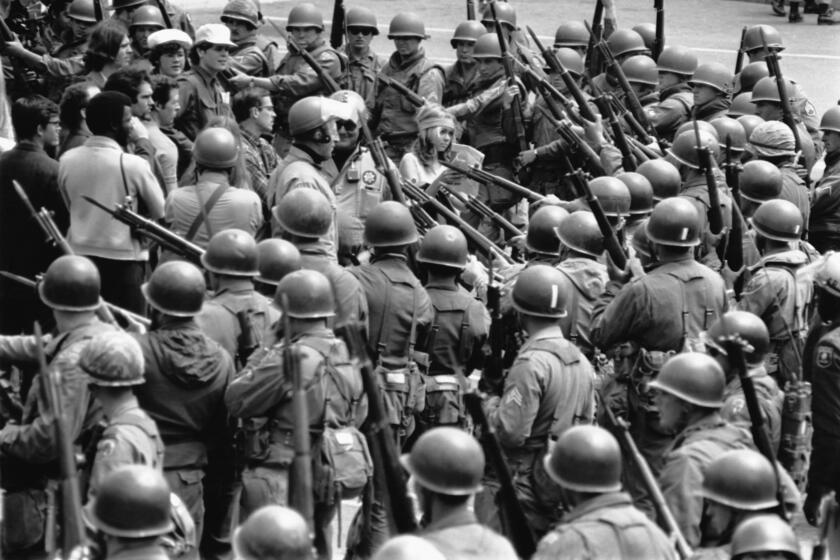Case spotlights race as magnet school criterion
In a case that could determine the future of the Los Angeles Unified School District’s popular magnet schools, attorneys met in court Tuesday to argue whether race and ethnicity are valid criteria for determining whether students are selected for the prized spots.
Attorneys for a group that opposes affirmative action contend that California voters rejected race as a factor in admitting students when they passed Proposition 209, the 1996 initiative that bans preferential treatment in public programs on the basis of race or ethnicity. Appearing before Los Angeles County Superior Court Judge Paul Gutman, the lawyers argued that the school district should find a racially neutral way to administer magnet schools and achieve diversity.
“We’re not seeking to end these programs, but we are seeking to end the illegal means by which kids get access to these programs,” said Paul J. Beard II, an attorney for the Sacramento-based Pacific Legal Foundation, which brought the case. “Even if you assume that the district has an obligation to integrate, whatever obligations that might have existed in the 1960s, 1970s or 1980s has to yield to the voters intent” in passing Proposition 209.
But L.A. Unified and its supporters maintain that the district is still under a 1981 federal court order to desegregate schools and that the voluntary magnet system, in which about 54,000 of the district’s 708,000 students are enrolled, has achieved a modicum of success in providing black, white, Asian and Latino students access to quality education.
Moreover, they argue that Proposition 209 specifically exempted court desegregation orders in force at the time the initiative became law.
“It’s disingenuous to argue that court order is not in force today,” said Catherine E. Lhamon, an attorney for the American Civil Liberties Union of Southern California, which has intervened in the case in support of the school district. “The magnet program is more oversubscribed and more popular than ever.”
All of the parties are seeking summary judgment -- a ruling in their favor without going to trial. Gutman took the arguments under submission and said he would issue a ruling in late October. Any outcome is likely to be appealed, though, meaning a trial is probable at some point, attorneys said.
In late June, the U.S. Supreme Court struck down magnet school programs in Seattle and Louisville, Ky., that used racial guidelines to determine enrollment. L.A. Unified attorneys have said the ruling is unlikely to have any effect because the district remains under court order to remedy past racial discrimination, although Beard contended that the 1981 court order did not mandate that the district use race or ethnicity in selecting students for magnet schools.
The case began in October 2005, when the American Civil Rights Foundation, an anti-affirmative action group associated with Proposition 209 author Ward Connerly, filed a lawsuit that challenged the constitutionality of the district’s magnet program and a voluntary busing program called Permits With Transportation.
The lawsuit was sparked when the family of a white student complained that the magnet school he wanted to attend put him on a waiting list for years because there were too many white students already enrolled, Beard said. The family is not a party to the lawsuit, he said, but are members of the American Civil Rights Foundation. In an interview after the hearing, Beard conceded that the magnet program is popular but argued that minority students are just as negatively affected when they are unable to obtain a desired space because of their color.
“This is billed as a case to gut magnet programs, but there are other criteria that could be used, like economic factors or a lottery,” Beard said. “Let’s just make it race neutral.”
But opposing attorneys said that given Los Angeles’ pattern of racially segregated neighborhoods, using the race or ethnicity of students is unavoidable. Attempts in other cities to discount race have mostly failed and led to resegregation, said Shanta Driver, an attorney for a group of students who have intervened in the case to support the L.A. Unified magnet program.
Magally Miranda, 16, a senior at Bravo Medical Magnet High School attending Tuesday’s hearing, said the racial diversity at magnet schools is a major reason for their success.
“L.A. is supposed to be so diverse, but in reality you have like Latinos on the Eastside, Armenians in the north and African Americans in South L.A.,” said Miranda, who would have attended Roosevelt High School had she not enrolled in Bravo. “At Bravo, I get a better feel for other cultures. Aside from the educational benefits, I can grow as a person.”
The magnet schools, which offer specialized programs, have a ratio of about 30% to 40% white students. They typically have an active parent body and offer bus transportation. The schools were initially intended to draw students from mostly white neighborhoods to minority campuses after the divisive forced-busing battles in the late 1970s.
--
More to Read
Start your day right
Sign up for Essential California for news, features and recommendations from the L.A. Times and beyond in your inbox six days a week.
You may occasionally receive promotional content from the Los Angeles Times.







